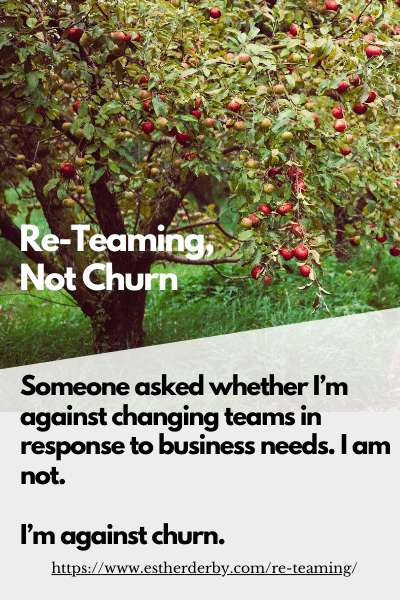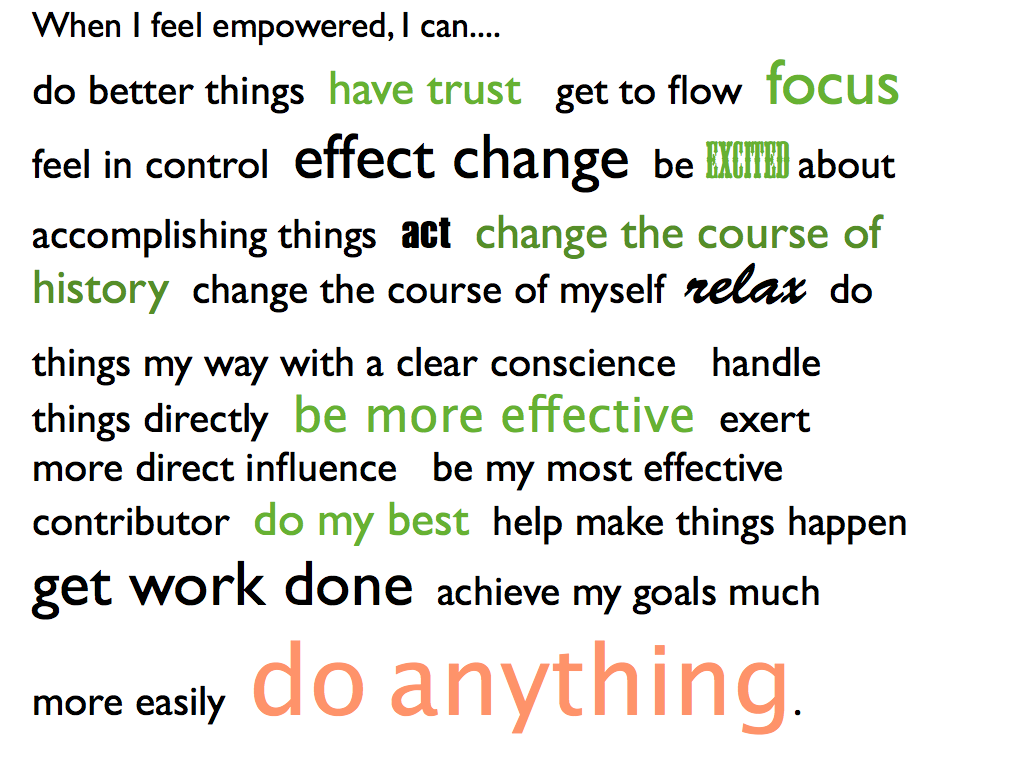When Diana Larsen and I teach a two-day Leading Agile Retrospectives workshop, the second day is stand up facilitation practice. We create the bare bones story of an iteration, then the class works together to design a retrospective. Each participant has a chance to lead an activity. And Diana and I offer feedback and facilitation advice.
Having done this more than a few times, I’ve noticed that we repeat the same advice in almost every class.
My colleague Mark Kilby asked what that advice was, so here it is (at least some of it).
When you ask the group a question, give people enough time to answer. It can feel a little disconcerting to stand there in silence, but people–especially introverted people–need time to collect their thoughts before they speak.
Count to eight s-l-o-w-l-y. If no one has answered, count to eight again. If there’s still no answer, move on.
Do some of the work in pairs or small groups. Not every discussion or activity needs to happen with the entire group. Doing some activities in smaller groups or pairs adds variety, makes it easier for reticent people to state their views, and limits the possibility for voluble or dominant people to own the airwaves.
Let the group do as much of the work as possible. Rather than doing all the capturing, when possible have people write their ideas on stickies (with a marker, not a regular pen) and post them. Ask one of the participants to help hang up flip charts or hand out stuff like markers, stickies, dots.
Give instructions in chunks. If you are using an activity that has multiple parts or requires movement, break up the instructions. Even if the instructions seem simple to you, people are not likely to retain them if they are hearing several steps at once and having conversations between steps.
Start by stating the purpose of the activity: For example, “We’re going to do use a use a special type of diagram to help us understand which issues are causing most of our difficulties.” Wait for questions.
Then give the first instruction. “Please from groups of three.” Wait until people are in groups before you continue…or say “In a minute, I’m going to ask you to get into groups of three. Let me tell you what I want you to do in the small group.” Give the instruction.
Once they’ve done than part, give them the next instruction.
Provide a key when you color code anything as part of an activity. (for example sometimes I’ll do a timeline with yellow=technical issues or events, blue=team issues or events, green=organizational issues or events.
If you get lost in an activity or something happens that you don’t know quite how to handle, pause and reset. No one can be perfect, so get good at recovering gracefully. It’s okay to say, “This isn’t going the way I thought it would. Is this useful to you?” Always have a back up activity, just in case.
Use wide chisel tip markers in dark colors for writing on flip charts or white boards. Dark blue, dark green, dark purple, green and black are easy to see. Fun colors like orange, light green, turquoise are hard to see from a distance. Red is okay for younger people, problematic for people over 40. Use those fun colors to accent, but not for text. (You can buy boxes of Mr. Sketch dark colors at www.artsuppliesonline.com.)
Write BIG, and use sentence case when writing on flip charts or white boards. It’s still sort of surprising how many people stand in front of a flip chart and write letters 1/2 inch tall. Write BIG. People can read sentence case more quickly than they can read ALL CAPS. Capitals are okay for headings, as they create a visual cue.
While I’m on the subject of flip chart writing, there’s something about visual field when you are writing BIG on a flip chart that makes it difficult to spell correctly. It’s nothing to do with you (or me). Really. It’s because your brain can’t take in the entire word as it does when you write on a smaller scale. Declare a General Spelling Amnesty, or put a spell check button on your flip chart when you make a mistake–you’ll probably get a laugh.
Put dying markers out of their misery. Really. Throw them away (unless they are refillable.) They are useless, worse than useless, because they make you think you are capturing something the group can see, when you aren’t and they can’t. Throw them away, now! (I visited a company where people held onto dead markers. When I asked why, they told me they were the only markers they had, and the secretary wouldn’t order any more. So wrong, on so many levels.)
Okay, that’s enough for now.








0 Comments